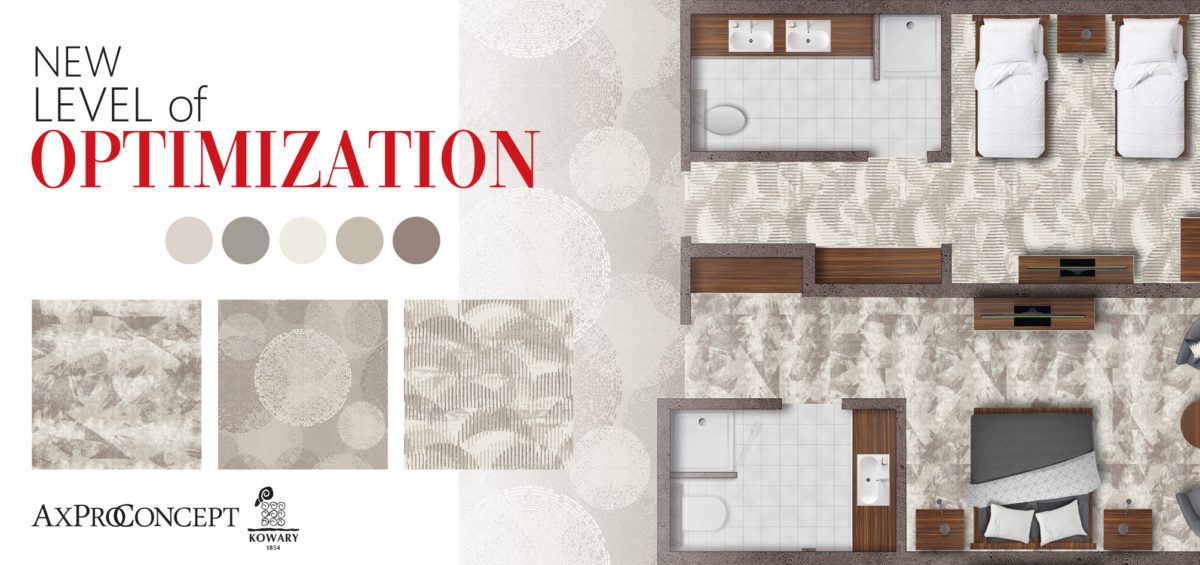In search of savings, we often lean towards cheaper solutions, both in design and material selection. However, are there alternative methods of adapting to budget constraints? In the text, we delve into the topic of cost optimization in interior design, with a particular emphasis on the choice of floor coverings. We will explain why conscious design and modern technologies can bring savings without compromising on quality and aesthetics.
Cost Savings Quest: Does Cheaper Always Mean Better?
When we talk about cost optimization, cheaper solutions come to mind, both in terms of design and materials. Do we always have to follow this path? Are there no alternative methods to adapt to budget constraints?
One way to optimize the budget is through conscious design. When considering the production and assembly technologies of interior elements such as furniture, decorative fabrics, or floor coverings, we can achieve the highest quality while optimizing costs. The key is to incorporate individually designed patterns into finishing materials. For such products, the price of the material is not the only factor; the design, production, and assembly processes also play a crucial role in the overall project budget.
Printed and Axminster: Choosing Technologies in Cost Context
Two main production technologies dominate the carpet market. The first is printed tufted carpets, mainly based on polyamide. The second is woven carpets, woven with Axminster technology, based on wool raw material. Although Axminster carpets may seem approximately 30% more expensive at first glance compared to others, in the longer term, they can offer a better price-to-quality ratio, making them a more cost-effective choice for investors.
Modern technologies, such as the looms used in Axminster carpet production, offer the possibility of precisely adjusting the roller size to the specific dimensions of hotel rooms. Depending on the chosen pattern, shape, and size of the space, waste generated during installation can be significantly reduced. This results in a smaller amount of material needed for purchase for a given investment, which can lead to cost reduction, offsetting the higher unit price of such a product.
Noticeable waste reduction—often ranging from a few percent in rooms and corridors to even several tens of percent in common areas—is not only beneficial from an economic standpoint. It is also a step toward sustainable development, both for interior equipment manufacturers and the hotel sector.
In this context, it is worth noting that, in the coming year, within the European Union, according to the CSRD directive, the obligation to publish non-financial information in the ESG area comes into effect.
A conscious approach to the choice of materials and technologies brings undeniable benefits to all involved in investment projects. Unfortunately, despite these advantages, this method is still underrated and rarely applied in the industry. Instead, the dominant criterion when choosing suppliers in tenders remains the lowest unit price, especially when it comes to prices per square meter of floor coverings.
Color Management in Technology: The Key to Cost Optimization
In the era of modern technologies, conscious design and color palette management become key tools in optimizing production costs. The diversity of machines, such as weaving looms or printers, brings its specific limitations that affect the final appearance and price of the product. The choice of the right pattern, construction, or even a supplier with the appropriate technical background can significantly impact unit costs.
For example, Printed Tufted Carpet, such as the Colortec or Saxon models, are most cost-effective when using a limited number of colors—usually five or six. On the other hand, Axminster-woven carpets allow for up to sixteen colors in a pattern, provided the production series is large enough.
The key here is flexibility in design—especially helpful in smaller projects. To meet budget expectations, one should adapt the design to a common color palette, leading to increased production scale and cost reduction without compromising the quality and construction of the materials used. Moreover, by leveraging appropriate technologies and making minor machine setting adjustments, both carpets and decorative rugs can be included in one production series.
Both aesthetics and budget play a crucial role in choosing interior furnishings. When opting for exclusive, handmade carpets like Hand Tuft, budget challenges are often encountered. However, there is an alternative that can combine high quality with affordable costs. Machine-woven carpets in the Axminster technology with increased pile weight, complemented by handmade relief (so-called “carving”), provide an excellent alternative. In practice, for most recipients, the difference between these two products remains imperceptible. However, from the investor or property owner’s perspective, the budget advantage is significant. Cost reduction in the range of 40-60% can be achieved, depending on the complexity of the relief pattern.
Such an approach allows not only for savings but also provides guests with unique aesthetic experiences without compromising on quality and design. Nowadays, every investment counts twice, and it’s worth considering solutions that combine the best of both aspects.
Unfortunately, rugs are often designed independently of carpets, leading to unnecessary cost increases. Combining the production of carpets and rugs within one color palette allows for diverse design at a more competitive price. Consequently, the aesthetic effect can remain at the same high level but with significant economic benefits.
Optimization in Design: The Significance of Cost Planning in the Long Run
Let’s consider for a moment the importance of responsible choice regarding the construction of carpets in terms of substrate and ceilings preparation. When selecting appropriate flooring, we not only decide on the appearance of a particular space but also on potential additional installation costs. Often, we face a choice between the low cost of the product and the required quality of the substrate.
Note that some floor coverings require the use of special self-leveling screeds. In the case of choosing PVC/LVT panels or tile carpets, the cost of such screed constitutes an additional expense, reaching up to 30% of the total floor system costs. Additionally, during building renovations, adapting existing ceiling structures to new acoustic requirements can be challenging. Axminster-woven carpets, depending on their weight, offer acoustic insulation at a level of 36 dB, which can be further increased by using suitable underlays, allowing for acoustic insulation even at the level of 24 dB.
However, the costs associated with an investment don’t end with the purchase and installation of materials. The risk associated with delays, errors, or unexpected complications also comes at a price. In many situations, a safe solution involves collaborating with companies offering a comprehensive offer according to the “Design&Build” concept.
Such solutions provide both products and installation services, proving to be more cost-effective. This eliminates the risk associated with coordinating activities among multiple entities and provides a guarantee of responsibility for the entire process resting with a single supplier.
Understanding the structure of investment costs involves not only considering aspects related to design and construction but also long-term maintenance of a given solution. An analysis of investment costs over a 50-year period shows that only 1%-2% of the total investment costs are related to the project, 20% constitute construction costs, while the dominant part, up to 80%, is consumed by operating costs.
By optimizing costs at the design stage, we have the chance to significantly influence future operating expenses. For example, considering floor coverings, it might turn out that the maintenance costs over a few years match the initial costs of purchase and installation.
Taking care to optimize these costs can start with the choice of the right material. The use of anti-soiling finishes is one such solution that can reduce the costs of future maintenance. This is especially recommended for floor coverings in light shades or in areas prone to dirt. It’s important to consider such protection before final design approval, as not every production technology is compatible with it. In the case of Axminster-type carpets, a protective finish can significantly reduce the need for washing and the risk of damage caused by material soaking.
The pursuit of savings does not have to lead to compromises in quality. Conscious design, incorporating modern production and installation technologies, allows achieving high quality while simultaneously controlling the budget. It is therefore essential to systematically discuss these innovations and implement them in collaboration with industry experts, such as Kowary Carpets and AxPro Concept. These companies implement the mentioned solutions and focus on combining aesthetics with an economic approach.



